Buderim: The source of dream coffee beans in 19th century Queensland
By Christina Ealing-Godbold, Research Librarian, Library and Client Services | 30 November 2021
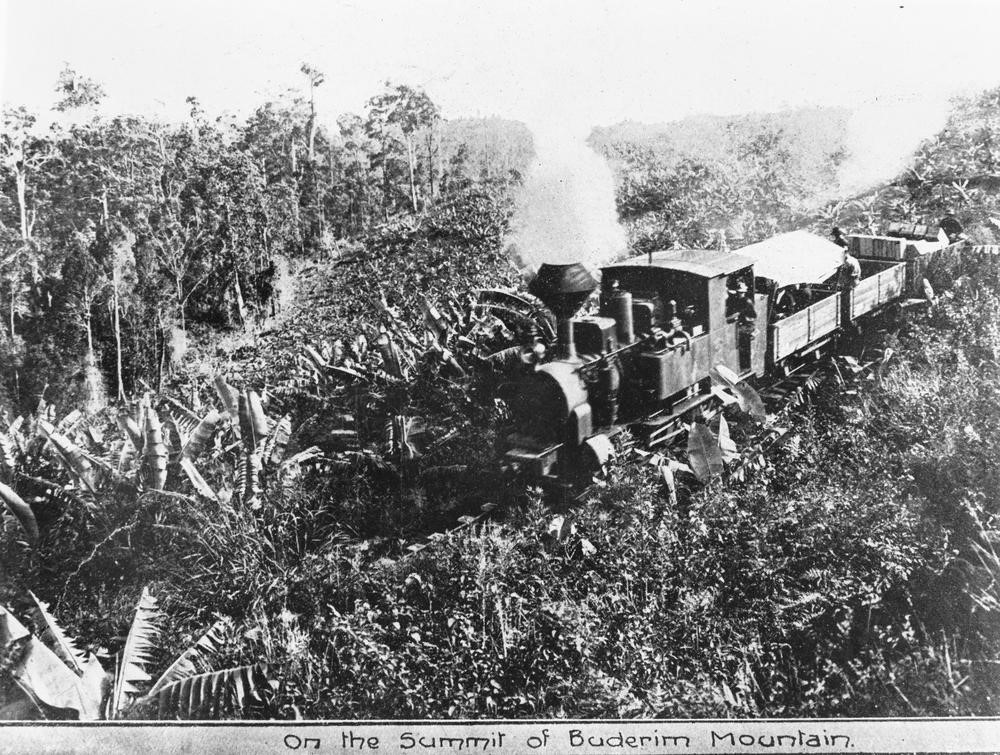
Steam Locomotive on the Buderim Tramway 1915. The locomotive makes its way between the banana plants and coffee bushes on its way to Palmwoods.
Copied and digitised from an image appearing in The Queenslander, 20 March 1915, p. 26.
http://onesearch.slq.qld.gov.au/permalink/f/1oppkg1/slq_digitool421261
At the end of the 19th century, Buderim on Queensland’s Sunshine Coast was known for an unusual commodity in a tea drinking nation: Coffee! Our Australian legends and icons were all based on “boiling the billy” and making the perfect cup of tea. Who in this wide brown land would want to buy coffee? The prevailing view today is that our post World War Two immigrants brought the love of coffee to this nation. Indeed, whilst that is true, Queensland was producing its own coffee from 1880.
Coffee was first introduced to Britain in the 1600s and was viewed as a luxury item. It led to the establishment of coffee houses across the nation and was considered as an elixir for increased energy and intellectual stimulation. Yet coffee consumption was small. Tea remained the brew of choice, as it did in Australia and New Zealand.
English Tea Drinking. (1905, October 28). The Telegraph (Brisbane, Qld. : 1872 - 1947), p. 2. Retrieved August 9, 2021, from http://nla.gov.au/nla.news-article174060452.
Despite our love of tea, Buderim growers were already producing coffee. A coffee sample sent by Mr E.J. Burnett of Buderim to the Earl’s Court Exhibition in London in 1899 received a gold medal diploma. Previously Mr Burnett had sent coffee to the Colonial and Indian Exhibition in London in 1886 and received a certificate of merit and a bronze medal.
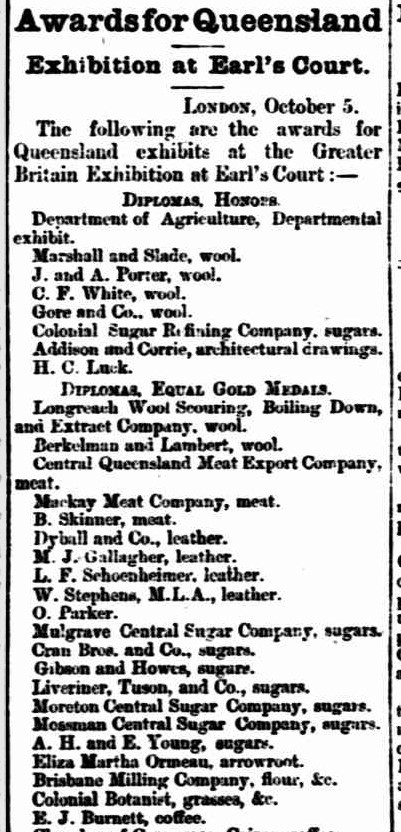
Awards for Queensland (1899, October 13). The Week (Brisbane, Qld. : 1876 - 1934), p. 13. Retrieved August 9, 2021, from http://nla.gov.au/nla.news-article182876568.
The Queensland Department of Agriculture even employed an expert in coffee growing, Mr H. Newport. In 1910, Mr Newport wrote a book, published by the Department of Agriculture and Stock in Brisbane, outlining his detailed knowledge on the growing of coffee. A copy of the book, Coffee cultivation in Queensland, is located in the John Oxley Library at State Library of Queensland. Very scientific in its approach, the book provides details of varieties of coffee plants, roots, how to tend the small plants and plans on how to plant the acreage. Mr Newport recommended C. Arabica of the common Ceylon or Coorg variety as being best for Queensland, and predicted the returns of a ten acre coffee plantation as being two tons in the third year and five tons from the fifth year onwards (worth 350 pounds in 1911). All of this was possible because of the rich volcanic soil of red porous basalt of Buderim.
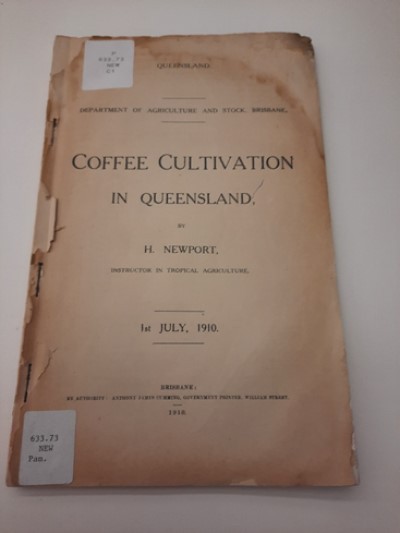
Newport, H. Coffee Cultivation in Queensland.
John Oxley Library, State Library of Queensland.
Photograph: C. Ealing-Godbold.
Others agreed with Mr Newport’s optimism, as a journalist reported in the Daily Mercury (Mackay) on 1 June 1911:
I have seen the best coffee plantations in Java and Ceylon, and nothing among them is finer than the crop now turning crimson and orange on the basalt slopes of Buderim Mountain
Buderim is a higher altitude plateau adjacent to the Maroochy River and surf beaches of the Sunshine Coast. With steep slopes, frost-free land and friable soil, the mountain of Buderim was ideal for growing coffee. This area of Queensland was known for its fruit production – bananas, mandarins and oranges, much of which was railed to southern markets. The railway line opened in 1891, providing the means of transport for growers of fruit from Palmwoods station to markets in Brisbane, Sydney and Melbourne.
First grown on Buderim commercially by a pioneer farmer, Gustav Riebe, the crop grew well among the rows of banana suckers. This protected the new coffee plants from harsh conditions while they were small and still becoming established. G.A.Riebe was a tea merchant, established in Queen Street Brisbane, who was offering a variety of teas for sale at his Oriental Tea Warehouse. He obtained 300 acres of land in the Maroochy area in 1881. Mr Riebe obviously knew about tea and coffee, and even designed his own machinery to prepare the dried beans for market.
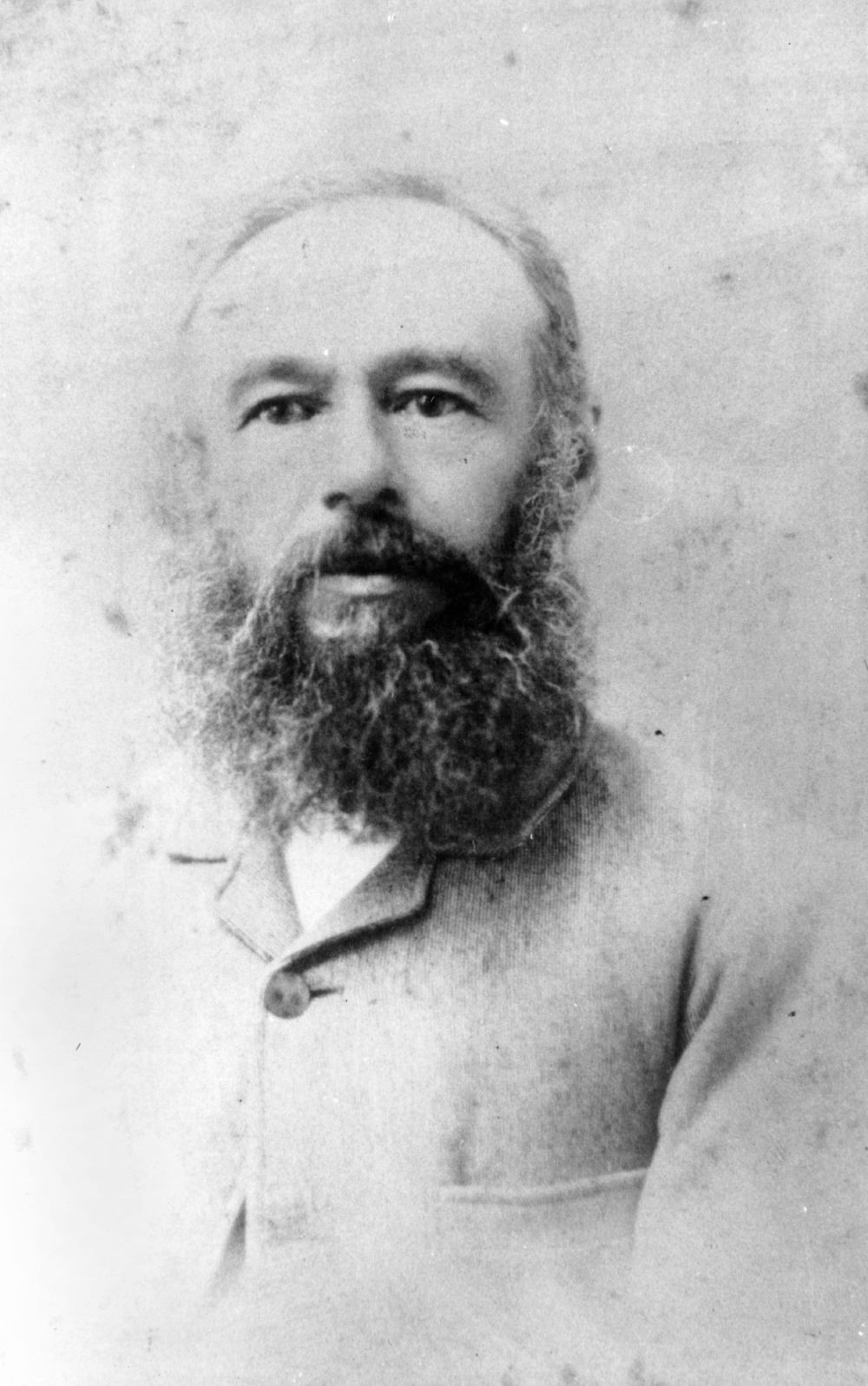
Gustave A. Riebe. John Oxley Library, State Library of Queensland. Neg no 1805
‘From the 1880s to around 1901, Gustav Riebe had a coffee plantation on Buderim Mountain.’
http://onesearch.slq.qld.gov.au/permalink/f/1oppkg1/slq_alma21220032540002061
So why coffee? And why Buderim? Buderim was given over to sugar cane production as well as bananas in the latter half of the 19th century. The changes to the legislation that allowed cheap labour from the South Sea Islands made sugar less attractive for small holdings as the labour costs increased greatly. As a result, Queensland farmers were looking for other crops to grow and rail to market. Buderim also had transport challenges – goods either had to go by road to Mooloolah to be shipped to Brisbane or by road to Palmwoods – to be railed to Brisbane. However, the roads were muddy and impassable in rain. Coffee was able to be bagged and was easier to transport than some other products.
Mr H. Newport from the Queensland Department of Agriculture visited farmers at Buderim in 1900 to provide expert advice on the growing of coffee trees. The beautiful green shiny leaves of the luxuriant coffee trees were soon seen all over Buderim. Mr Newport recommended plantings of up to 1,000 bushes per acre. On Buderim, farmers reared the young plants in a plant nursery. When established, the young plants were planted among the bananas. It took a few years before the coffee plants were strong enough to survive without the banana plants, which were then duly removed. The picking and drying stages of the coffee berries was slow. As the berries became a beautiful bright red colour, they were picked by hand and dried in the sun for three weeks. The husking process allowed the bean inside to be roasted, packed and sent to market. However, it was reported that the growers used “ancient hand mills and hand worked ovens.” (Daily Mercury (Mackay), 1 June 1911, p.6)
With all of those berries ripening and drying, a coffee roasting business of more robust proportions was needed. Mr Harry Board and his wife began the Buderim Mountain Coffee Company, with imported roasting equipment.
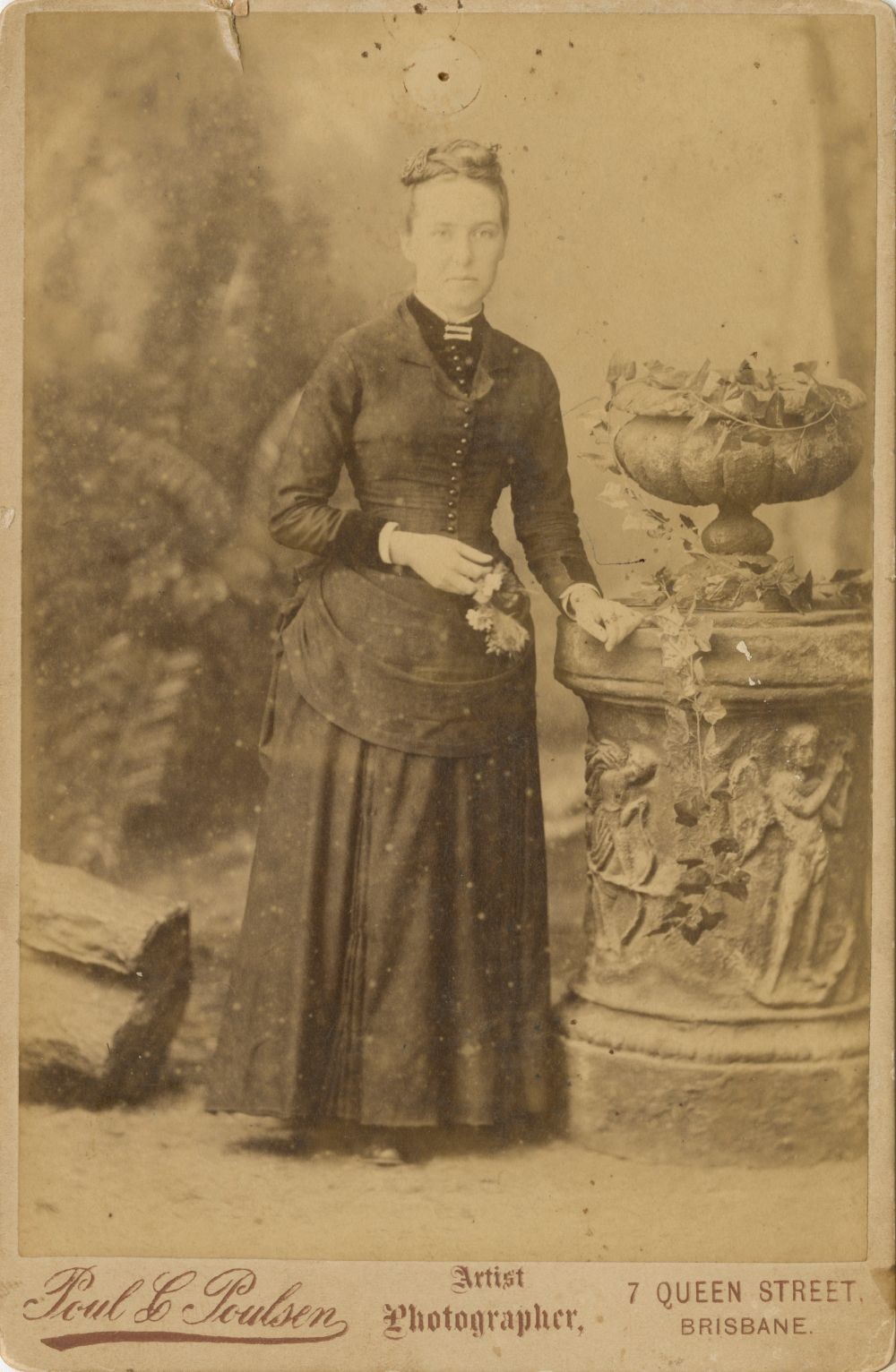
Cabinet portrait of Mrs Harry Board, nee Polly Briggs, owner of the first coffee mill in Buderim. Photographic print : black & white , 1880-1889?. John Oxley Library, State Library of Queensland.
http://onesearch.slq.qld.gov.au/permalink/f/1oppkg1/slq_alma21258362690002061
According to Mr Newport, the required machines had to be imported either from London or Ceylon and could be operated by hand or power. This plate below shows the kind of equipment imported by early coffee companies in Queensland.
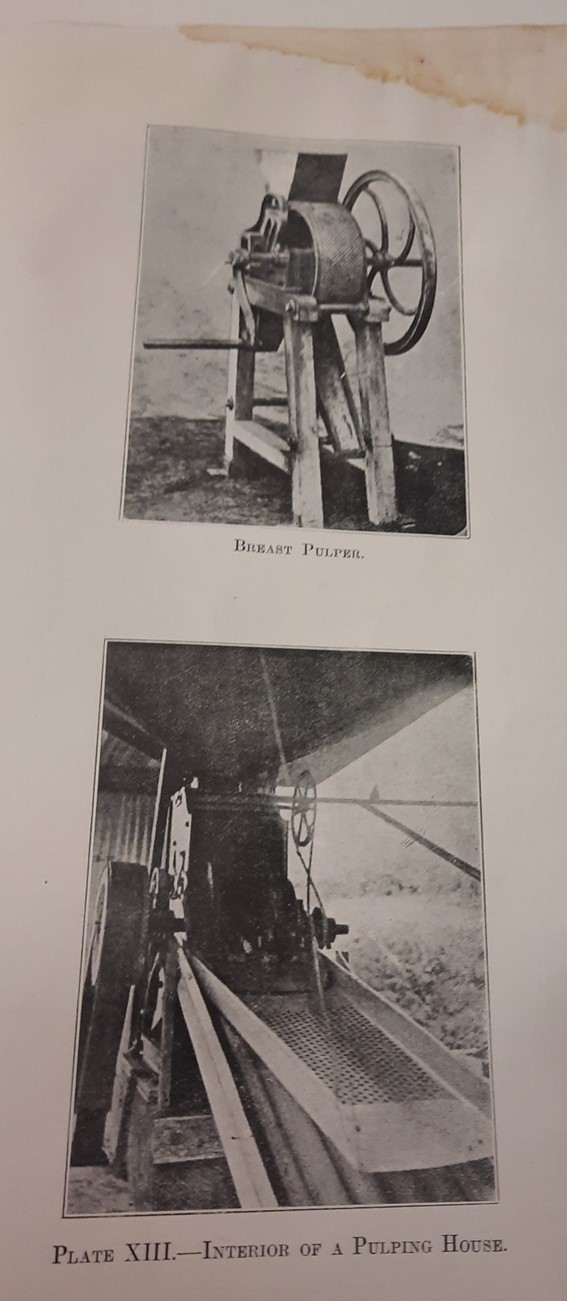
Pulping Coffee equipment from Mr H. Newport’s book, p.53.
Photograph: C. Ealing-Godbold
By 1911, Buderim was the largest coffee growing area in the state. The scientific approach to the cultivation of quality coffee beans, as disseminated by Mr Harold Newport paid off for the farmers of Buderim.
At first, a tariff arrangement protected the local growers. The South American coffee was therefore more expensive to import. However, over time, this support waned and the profit in the industry declined. Just as in sugar plantations, the labour required to pick the crop became exorbitant. It is quoted that in 1924, it cost one shilling and three pence to pick enough berries to fill a kerosene tin and to be a going business, it was necessary for a farmer to pick ten tins per day. What an interesting productivity measure – a kerosene tin!
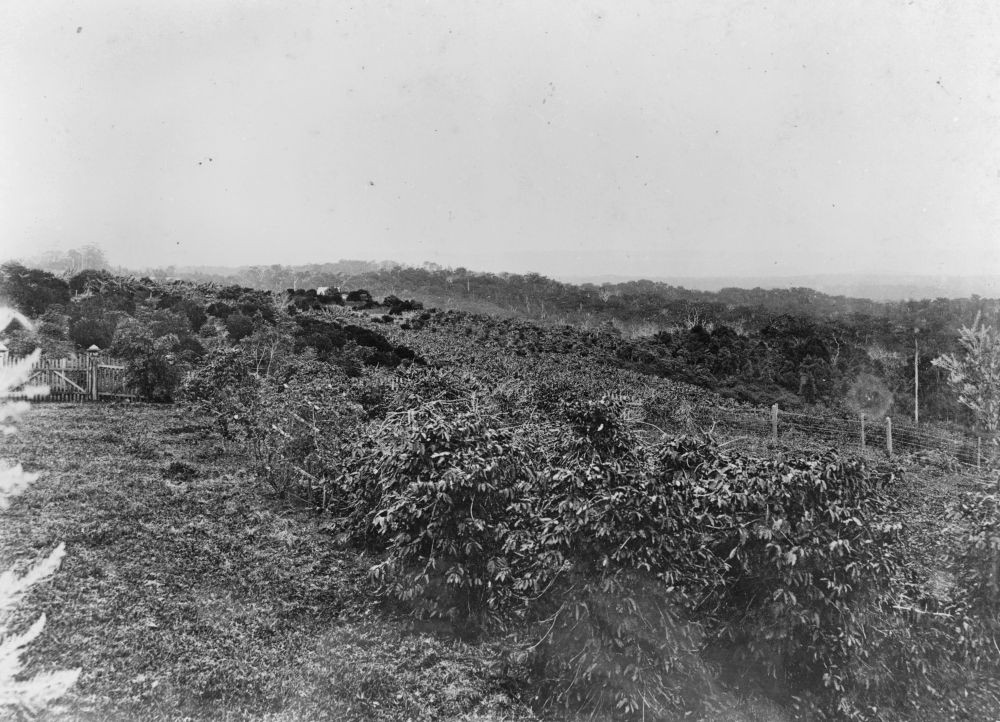
Fielding’s Coffee Plantation, Buderim. John Oxley Library, State Library of Queensland. Neg 21219.
http://onesearch.slq.qld.gov.au/permalink/f/1oppkg1/slq_alma21220427920002061
Other crops gained the eye of the growers of Buderim. Messers Arthur and George Burnett decided to trial growing ginger in the First World War era and so the story of Buderim ginger began. The Buderim Steam Tramway was built to expedite the transport of goods to Palmwoods and so Buderim Ginger became a household name in Australia. The beautiful green glossy leaves of the coffee trees left the mountain as they were pulled out to be replaced by more profitable crops.
Further Reading
Books
Newport, H. & Queensland. Department of Agriculture Stock, 1910. Coffee cultivation in Queensland / by H. Newport.
State Library South Bank Collection, Request to access from level 4 (P 633.73 new).
Fraser, G. et al., 2014. A short history of the Buderim-Palmwoods Tramway.
The book covers the period of Buderim's history from first suggestions for a tramway in the early 1900s to the opening of the line in 1915.
State Library South Bank Collection, Request to access from level 4 (P 388.46 FRA ).
Web resource
Buderim War Memorial Community Association, issuing body, 2012. Buderim 150 : celebrating the 150th anniversary of Buderim with events, sharing of stories and pictures from the community.
Blog of Buderim 150, a community based initiative created by the Buderim War Memorial Community Association to celebrate the 150th Anniversary of Buderim and commemorate the history and growth of Buderim over the past 150 years. Online Access via One Search.
More information
Opening hours - /plan-my-visit/hours-transport-access/opening-hours
One Search - http://onesearch.slq.qld.gov.au
Membership - /get-involved/become-member
Ask us - /plan-my-visit/services/ask-us
Comments
Your email address will not be published.
We welcome relevant, respectful comments.